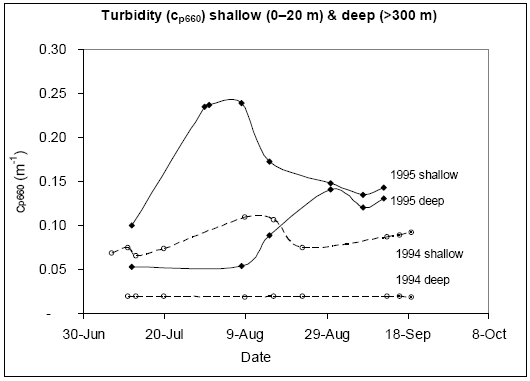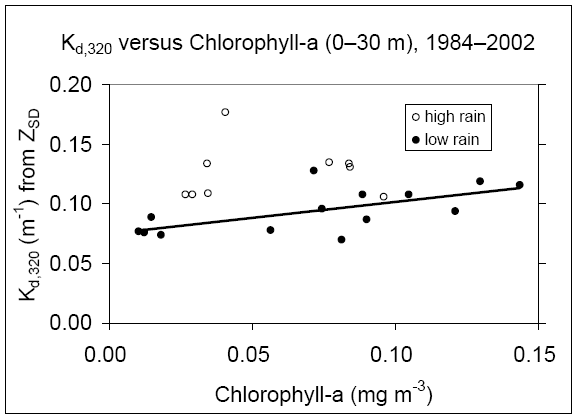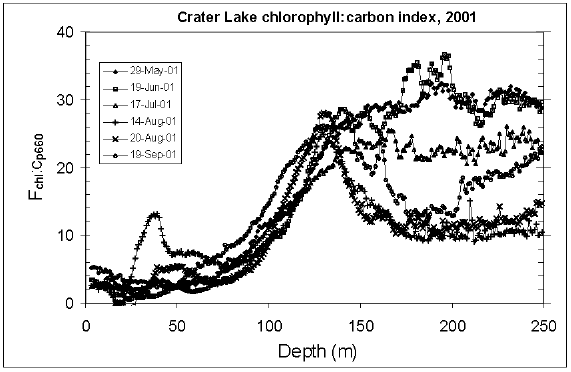Figure 9B. Crater Lake turbidity (cp660) reached unusual levels during summer 1995 compared to 1994 (a typical year), coincident with high precipitation and runoff during Spring and Summer 1995 (see caption for Figure 10A). Both the surface and deep water (averages for 0–20 m and 300 m plotted) were elevated in early July and went much higher at the surface during the days after the 25 July thunderstorm and appears to have reached the bottom 2–4 weeks after the storm.
Figure 10A. Crater Lake rain (inches per month at Crater Lake NPS Headquarters) and chlorophyll-a (0.45 um filter), averaged 0–30 m and 40–140 m (1984–2002 July–August).
Figure 10B. Crater Lake Kd,320 (10–40 m) versus surface Chl-a (0–30 m, retained on0.45 micron filter) for July and August 1984–2002. Only “dry” months and several months with heavy but frozen precipitation are included in the regression. Regression equation for warm dry months, y = 0.15x + 0.08 (r2 = 0.44).
Figure 11A. Crater Lake empirical model for Kd,380 versus depth based on bio-optical signals (20 August 2001). Temperature and depth from Seabird CTD; chlorophyll fluorescence (Fchl, relative units) from Wetlabs WetStar fluorometer;cp660 from SeaTech transmissometer (cw=0.411 m-1); Kd,380 (open circles) from LI-1800uw scans. Model: Kd,380= 0.40*Fchl + 0.36*cp660
.Figure 11B. Crater Lake phytoplankton photoacclimation index for 2001 (from ratio of biooptical signals, Fchl:cp660).
***previous*** — ***next***





